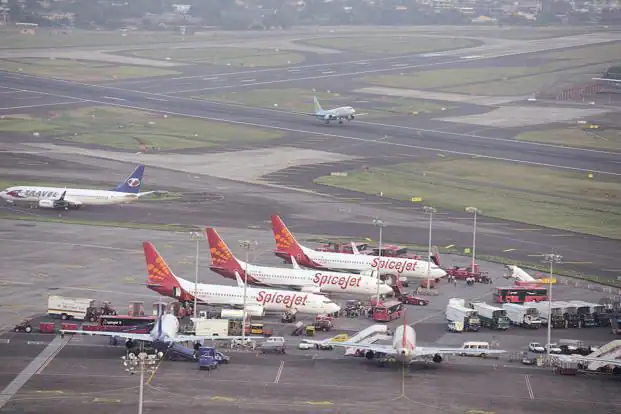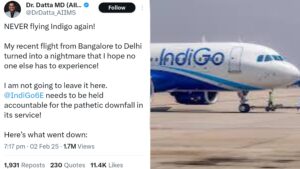AAI Reissues Directives Following Mumbai Airport Aircraft Incident

AAI Reissues Directives Following Mumbai Airport Aircraft Incident
While many airports rely on distance-based separation, where a specific minimum distance is maintained between arriving aircraft, Mumbai airport utilises time-based separation.
13 June 2024
On Monday, the Airports Authority of India (AAI) reissued a directive urging air traffic controllers (ATCs) to rigorously follow standard operating procedures (SOP) regarding aircraft separation during landing and take-off at Mumbai airport.
This action comes in response to an incident on Saturday where an IndiGo plane landed behind an Air India aircraft that was in the process of taking off from the same runway.
Initial inquiries into the incident indicate a potential breach of the updated Standard Operating Procedure (SOP) for Time Based Spacing between arrivals at Mumbai airport. The IndiGo aircraft landed as the Air India plane was lifting off. The Directorate General of Civil Aviation (DGCA) has initiated an investigation into the matter.
While many airports rely on distance-based separation, where a specific minimum distance is maintained between arriving aircraft, Mumbai airport utilises time-based separation. The recent AAI circular emphasised the importance of adhering to the SOP issued in 2023, which outlines these procedures.
The circular outlines the guidelines for time-based separation procedures, which involve air traffic controllers considering the time it takes for an arriving aircraft to cross the runway threshold.
The duration for an aircraft to descend and pass the runway threshold varies dynamically, influenced by factors such as aircraft speed and wind speed. Time-based separation, unlike distance-based separation, permits increased aircraft movements on the runway. However, it demands quick decisions from the relevant air traffic controller if there are any delays from pilots awaiting takeoff clearance on the runway.
If the guidelines outlined in the SOP are breached, controllers must halt departures and instruct arriving aircraft to perform a missed approach. It emphasises the need for extreme caution when taking such actions.
This implies that in the incident on Saturday, since the Air India aircraft experienced a delay in starting its take-off, the controller, as outlined in the SOP, should have revoked the clearance for take-off granted to the Air India aircraft. Simultaneously, the controller should have instructed the IndiGo aircraft to execute a missed approach or go-around, necessitating a second landing attempt.






